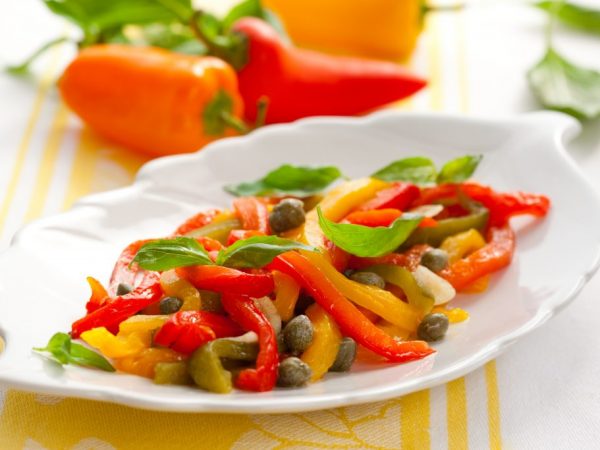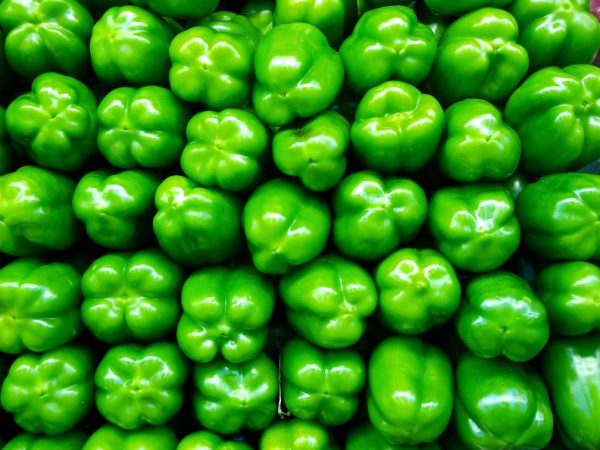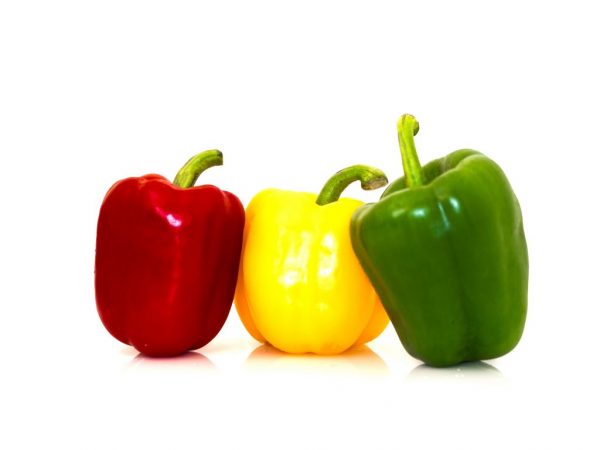The best varieties of salad peppers for the Urals
The peculiarity of the Urals climate is that the weather is changeable, cold winds often blow, summers are short with an average temperature of 20-22 ° С. Such conditions do not look particularly attractive for growing a heat-loving crop. But a large list of hybrids and varieties allows you to choose peppers for the Urals, which will grow and bear fruit perfectly. And simple agrotechnical techniques will help you achieve good results in growing peppers even in cool summer conditions.

The best varieties of salad peppers for the Urals
How to choose
When choosing varieties of sweet peppers for the Urals, you need to pay attention to the description of the culture in order to find out what features are characteristic of it. The following types are best suited:
- Determinant (undersized) - plants will not expend extra energy to build up a large amount of green mass, and in case of cold snaps, such a variety can be easily covered.
- Early ripe (100-120 days) - in a short summer period they will have time to set and ripen.
- Resistant to changes in weather conditions - will be able to cope with short-term weather deterioration and temperature changes.
In the Urals, it is practiced to grow peppers both in greenhouses and in the open field. A properly selected variety plays an important role in the successful cultivation of such a southern crop in climatic conditions uncharacteristic for it.
Through the efforts of breeders, a large number of varieties have been bred that will satisfy these requirements and will delight with the harvest even in the changeable weather of the Urals.
The best varieties for the Urals
Among the varieties that are suitable for growing in the Urals, it is worth highlighting the best. Pepper varieties for the Urals can be selected depending on the planned planting site and ripening time.
Growing in greenhouses
Peppers in the Urals are often grown indoors. Greenhouses:
- heated;
- glass;
- polycarbonate;
- film.
They are all great for growing sweet bell peppers. Cultivating in a greenhouse makes it somewhat easier to care for plants in cool climates.

Peppers are more commonly grown in greenhouses.
Belladonna F1
Seminis Dutch hybrid. Bushes grow compact, 50-60 cm high with well-developed skeletal branches. This variety is ultra-early, the fruits begin to ripen after 60-70 days from the moment the seedlings are planted in the greenhouse. They are distinguished by high and stable productivity. On the bush, 9-12 fruits ripen, weighing 180-210 g. The fruits have a cuboid four-chamber shape, at the time of technical ripening they acquire a creamy yellow color, when fully ripe they have a beautiful uniform yellow color. The thickness of the pulp is 5-9 mm, the length of the fruit is 8-10 cm, the width is 7-8 cm. It has a universal purpose. They appreciate it for its good taste and excellent presentation. Resistant to diseases such as tobacco mosaic.
Giganto Rossa F1
Large-fruited, mid-early hybrid variety (3 months after planting the seeds, the first crop can be harvested). The bush of the plant is predominantly of medium height, develops compactly, does not require formation.Fruits grow weighing more than 250 g, 20-26 cm long, 7-9 mm walls of deep red color at the stage of biological maturity. They have a cubic shape.
It is appreciated both for its large fruits and for its pleasant taste, juicy and dense structure. Rich in vitamin C, and the amount of sugar is about 6%.
Banana dessert
Refers to medium early varieties. Unique long-fruited variety. Fruits grow 30-35 cm long with an average weight of 250 g, even with thick walls up to 1 cm. At the beginning of ripening it has a vanilla-yellow color, at the moment of reaching biological maturity it becomes dark red. The multiple ovary looks like a bunch of bananas. The stage of technical ripeness occurs in 120-130 days. The height of the bush is up to 0.7 m. It has a stable yield in the range of 5-7 kg per 1 sq. M.
The taste of pepper is sweet, the structure of the pulp is homogeneous, juicy. Well suited for fresh salads, cooking and preservation.
Agapovsky
It belongs to semi-determinate varieties with an early ripening period. The height of the bush reaches an average of 90 cm. From the moment of sowing seeds for seedlings to the ripening of the first fruits, 110-125 days pass. The fruits are not large, on average they weigh 120 grams, but the variety has a high and most stable yield among peppers with similar characteristics. From 1 sq. M. you can harvest about 10 kg of the crop. The fruits are cubic in shape. Wall thickness 6-7 mm. At the moment of full ripening, they acquire a deep red color and a beautiful glossy shine. They have a pleasant taste and juicy homogeneous pulp. It tolerates short-term cold snaps at night. Very simple and undemanding to care for. Has a high resistance to disease.
Apricot Favorite
Determinant type, plants grow compact, well developed up to 50 cm in height. The first harvest of the Apricot Favorite is harvested in 100-105 days. It has a high yield, from one bush you can collect 20-22 fruits weighing 125-150 g. Fruits have a beautiful orange color. Cuboid shape with division into four chambers. The skin is firm but thin with a smooth surface and a waxy sheen. The wall thickness is on average 6-7 mm. The fruit has a pleasant taste and pronounced aroma.
Cornet
Peppers of this variety are distinguished by their unique chocolate brown color. It will be of interest to connoisseurs of exotic vegetables. Cornet ripens in 105-115 days from the moment of sowing the seeds. It has a high yield, more than 3 kg of peppers ripen on one bush. Large-fruited fruits 200-230 g, wall thickness 6-7 mm. The bush is semi-determinate, slightly branched, there are few leaves on the plant. This is one of the varieties that, even with a bush height of 1-1.5 m, ripen perfectly in the Urals.
For 1 sq. m you can plant up to 5 plants.
For outdoor cultivation
Despite the capricious weather in the Urals, pepper, with proper agricultural technology and growing by seedlings, grows well and bears fruit in the open field.
Gingerbread man
A sweet bell pepper variety that has proven itself not only for cultivation in the Urals, but also in many other regions. Early maturing type (110-120 days), with a very compact and undersized bush 40-50 cm.It has round fleshy fruits, weighing 90-130 g, thick walls 1 cm or more, at the time of technical ripeness it is green, after 2 weeks it becomes red color. The seeds are very small in a shallow seed chamber. Differs in high productivity, per 1 sq. M. ripens 6-7 kg, which is a very high figure for peppers grown in the open field. It has a universal purpose, suitable for fresh consumption and processing. Gingerbread man is not picky about care and growing conditions. Resistant to temperature drop. Rarely sick with tobacco mosaic, gray rot, top rot.
Eroshka

Bushes grow quite often
Belong to the early maturing type. The bushes are very compact, their height reaches only 30-45 cm. They can be planted tightly, about 10 bushes can grow on 1 meter, using the belt planting method (between plants 15-20 cm).In a small area, it allows you to get a high yield. 12-16 fruits ripen on one bush. Which in the stage of absolute maturity have a red color with an orange tint. Fruits are cuboid, weighing 180-200 g, 10-12 cm long and 7 cm wide. Wall thickness 6 mm. Ripening is simultaneous, amicable.
Resistant to some diseases inherent in peppers:
- gray rot;
- verticilliosis;
- top rot;
- tobacco mosaic.
You can use the variety as a sealant for tall varieties of peppers, tomatoes, eggplants. Eroshki bushes are planted between indeterminate plants.
Funtik
A high-quality and stress-resistant early variety, from sowing to the ripening of the first fruits, it takes 105-115 days. Semi-determinant bush, well developed, height up to 70 cm. Planting density 5 bushes per 1 sq. M. One bush grows 15-18 fruits weighing 120-180 g. They have a conical shape, evenly tapering towards the tip. Fruit sizes 14x8, wall thickness 6-8 mm. The ripe fruit is sweet, red in color. The peppers ripen together. They are distinguished by good taste, universal purpose.
Czardas
A variety that has proven itself well in unstable weather conditions. Belonged to early varieties, ripens to the stage of technical maturity in 95-110 days, and to biological 110-125 days. Has high yield rates. On small bushes (up to 70 cm high) 15-18 fruits are tied. From sq. m. more than 10 kg of crops are harvested. Suitable for compacted planting, 5-8 bushes per 1 sq. M.
The fruits are especially decorative and have a good presentation. A sweet fruit grows, weighing 180-220 g, with a size of 16x8 cm in a conical shape with a sharp end. Wall thickness 5-6 mm. The color of ripe fruits is from light orange to red-orange. Suitable for fresh consumption, home and industrial processing.
Secrets of growing pepper in the Urals
The key to a positive experience in pepper cultivation will be:
- correct sowing time of seeds;
- compliance with the timing of disembarkation of seedlings;
- warming the garden;
- temperature control.
For successful cultivation of pepper in the Urals, it is better to use the seedling method.
Seeds for seedlings in this region are sown in mid-March for the greenhouse, and in early April for open ground. Do not rush to sow seeds ahead of time, since sweet pepper seedlings in the Urals can be planted only at the moment when night temperatures stabilize and reach 14-15 C, and the soil warms up enough. This is roughly mid-May for greenhouses and no earlier than the 20th of May for open ground. Seedlings at the time of disembarkation should be 45-60 days old.
Warming up the beds will be important when planting seedlings, this can be done using:
- manure;
- natural stone;
- plastic water bottles.
In order for the bushes to grow better and not suffer from nighttime drops in temperature, the bed is warmed up, for this it is practiced to lay manure in the aisles before planting seedlings. Remove 20-30 cm of soil, spread cow or horse manure and cover with removed soil. This method is used for greenhouses and for open ground. Consumption 3 kg per 1 sq. M. And also stones or bottles filled with water are laid out on the garden bed, which in the daytime will be heated by the sun, and at night they will give off heat to the soil.
Often, even in the summer period, a decrease in temperature in the daytime below 18-20 is observed, low temperatures cause a delay in the growth of sweet pepper and postpone the ripening of fruits. In such a situation, the best option would be to cover the bushes in open beds with agrofibre and additionally insulate the greenhouse with a film or non-woven material.
Conclusion
Modern science in the field of selection and agronomy, as well as the proper care of gardeners, make it possible to grow pepper crops even in such a risky region for agriculture as the Urals. There are a large number of quality varieties on the seed market. You can plant several different varieties in one season - this will help you finally decide on your favorites.


